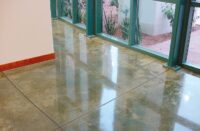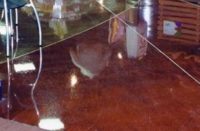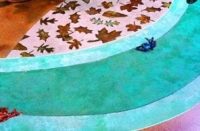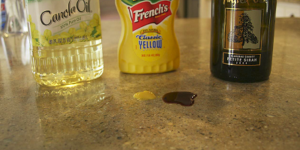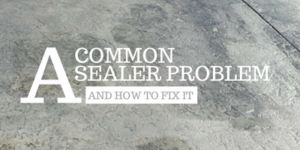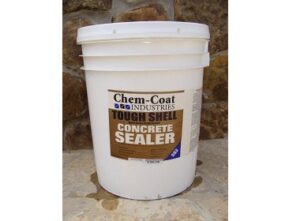 Choosing the right sealer is not always easy. Once you’ve made your choice, then it’s crucial to pick the right applicator.
Choosing the right sealer is not always easy. Once you’ve made your choice, then it’s crucial to pick the right applicator.
There are many different types of sealers out there, and choosing the right one is not always easy. But once you’ve made your choice, then it’s crucial to pick the right applicator. Read on for some expert advice on this topic from Scott Wyatt, director of technical sales for Floric Polytech.
Polyester rollers: Use only with water-based products. If you use polyester with solvent base or oil base, the polyester will nap out or flatten.
Mohair or Delron rollers with a chemical-resistant or phenolic core: Use with solvent-based products of all different solids content. Mohair (which is actually goat’s hair) will flatten or nap out if used with water-based products.
 Squeegee: A Floric-preferred method of applying coatings is to squeegee and backroll. However, there are many types of squeegees. The ultra-soft neoprene (like a wetsuit) is good for medium-low viscosity coatings at a rate of 400 square feet to 800 square feet per gallon; however, if the product doesn’t have a low enough viscosity or has a matte agent in it, the surface may have a slight orange peel effect at higher spread rates. In some cases, this will aid in slip coefficient.
Squeegee: A Floric-preferred method of applying coatings is to squeegee and backroll. However, there are many types of squeegees. The ultra-soft neoprene (like a wetsuit) is good for medium-low viscosity coatings at a rate of 400 square feet to 800 square feet per gallon; however, if the product doesn’t have a low enough viscosity or has a matte agent in it, the surface may have a slight orange peel effect at higher spread rates. In some cases, this will aid in slip coefficient.
At Floric we prefer a long-blade, rounded-edge squeegee that pivots forward and back. Depending on viscosity and porosity, this will allow you to spread most products at a rate of 150 square feet to 350 square feet per gallon.
Conventional pump up sprayers: The typical uses for these are densifiers and penetrating, low-evaporation solvent acrylics (Oxal-100, xylene-based).
Chemical-resistant pump-up sprayers: Used for low- and high-evaporation parameter solvents (xylene, Oxal-100, PTCBF, acetone, Aromatic 100, etc.). Will typically yield 150 square feet to 350 square feet per gallon.
 HVLP sprayers: 300 square feet to 800 square feet per gallon. These can spray thin, solvent-based products; low- and high-EVP (evaporation parameter) water-based products; products with low to medium viscosity and solids; solvent-based urethanes and epoxies; water-based polyaspartics, and solvent-based acrylics.
HVLP sprayers: 300 square feet to 800 square feet per gallon. These can spray thin, solvent-based products; low- and high-EVP (evaporation parameter) water-based products; products with low to medium viscosity and solids; solvent-based urethanes and epoxies; water-based polyaspartics, and solvent-based acrylics.
Airless sprayers (3000-psi): 350 square feet to 600 square feet per gallon depending on tip size. A 611 tip will give you about 600 square feet per gallon. A 521 tip will allow you to spread about 350 square feet per gallon.
Airless sprayers may be used for solvenated acrylics and lacquers (gloss and matte); water-based acrylic and  water-based MMAs; water-based epoxy with low solids content; water-based urethanes (gloss and matte); water-based polyaspartics (gloss or matte).
water-based MMAs; water-based epoxy with low solids content; water-based urethanes (gloss and matte); water-based polyaspartics (gloss or matte).
Airless sprayers may also be used when adding small amounts of color pigment to tint faux-finish stain or antiquing.
They may also be used for solvenated/VOC-compliant CRV aliphatic urethane, if the product is low-viscosity or may be thinned with a VOC-compliant solvent, i.e., acetone, Oxal 100, PTCBF.
Gear-driven and or piston-driven pumps: The variables with these pumps are so vast, the equipment manufacturers must be contacted. These pumps are used for high-viscosity materials.
Lambs wool applicators and other synthetics: Generally used for low-viscosity sealers that have long open times and good flow, generally on interior terrazzo and wood floors.
The long open times of these sealers are not conducive to exterior applications due to the surface out-gassing caused by temperature changes.
